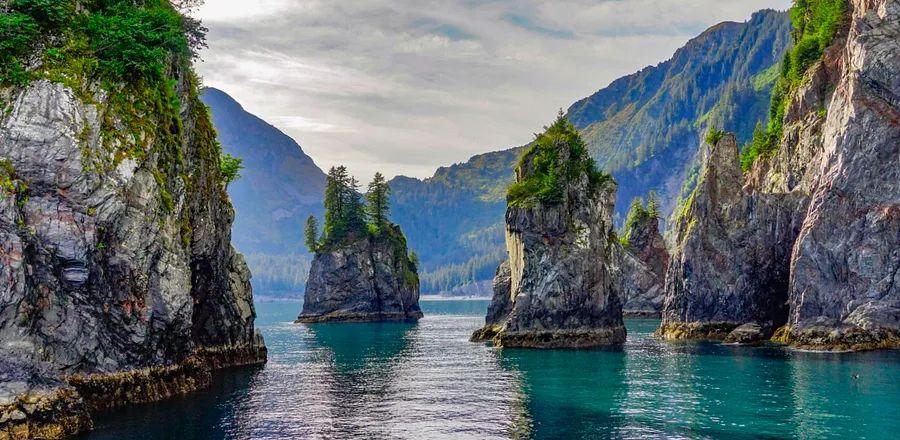19 U.S. National Parks You Can Explore for Free—Any Time of the Year

The United States boasts some of the most stunning landscapes worldwide, many of which are safeguarded within its extensive national park system. From majestic mountains and verdant forests to barren deserts and expansive coastlines, these protected areas offer unmatched opportunities for outdoor adventures, wildlife watching, and a deeper connection to nature.
Best of all, numerous parks welcome visitors without any admission fees, ensuring they are accessible to everyone.
Here’s what you need to know about which national parks in the U.S. are free to enter—and what exciting activities await you in some of these remarkable parks.
The national parks that are always free to visit
Among the 63 established national parks in the United States, 19 are free to visit every single day of the year (the remaining 44 are fee-free on six occasions annually). The parks with no entrance fees at any time are:
- Biscayne National Park, Florida
- Channel Islands National Park, California
- Congaree National Park, South Carolina
- Cuyahoga Valley National Park, Ohio
- Gates of the Arctic National Park, Alaska
- Gateway Arch National Park, Missouri
- Glacier Bay National Park, Alaska
- Great Basin National Park, Nevada
- Great Smoky Mountains National Park, North Carolina and Tennessee
- Hot Springs National Park, Arkansas
- Kenai Fjords National Park, Alaska
- Kobuk Valley National Park, Alaska
- Lake Clark National Park, Alaska
- New River Gorge National Park, West Virginia
- North Cascades National Park, Washington
- Redwood National Park, California
- Voyageurs National Park, Minnesota
- Wind Cave National Park, South Dakota
- Wrangell–St. Elias National Park, Alaska
Why aren’t all national parks free to enter? National parks serve as stunning natural landscapes, but they are also ecological reserves that require ongoing maintenance. This includes everything from preserving hiking trails to managing invasive species and conducting wildlife studies. Conservation costs are significant. Entrance fees help to cover the shortfall between government funding and the parks’ operational needs, such as maintenance, enhancements, staff salaries, and environmental safeguards. Additionally, these fees support essential projects aimed at keeping the park’s natural resources—its forests, rivers, wildlife, and terrains—in good health.
The top free national parks
New River Gorge National Park, West Virginia
In 2020, New River Gorge was designated as the 63rd national park in the United States. Despite its name, the New River is actually one of the oldest rivers on the planet, with an estimated age of 360 million years. The river has carved a deep gorge over countless millennia, resulting in dramatic cliffs, breathtaking overlooks, and thrilling whitewater rapids that define the park’s landscape.
At the park's center stands the iconic New River Gorge Bridge, recognized as one of the longest single-span arch bridges in the world. Every October, during Bridge Day, this engineering wonder becomes the launchpad for base jumpers leaping into the chasm below. Another thrilling way to experience the New River is through whitewater rafting. The Upper New River provides a milder adventure, perfect for families or novices, while the Lower New River is renowned for its exhilarating Class IV and V rapids, catering to experienced adventurers.
Great Basin National Park, Nevada
This often overlooked national park showcases an incredible contrast in landscapes. Spanning over 77,000 acres, the park is dominated by the stunning Wheeler Peak, which rises to 13,063 feet above sea level. One of its most remarkable features is the contrast between the arid desert basins and the lush greenery around mountain streams and glacial valleys, leading to a rich diversity of flora and fauna, including mule deer, bighorn sheep, and more than 230 bird species.
Great Basin National Park is among the select few locations in the United States that has been designated an International Dark Sky Park. Removed from the glare of urban light pollution, the park offers spectacular views of the Milky Way, allowing visitors to see stars, planets, and even far-off galaxies with the naked eye.
Kenai Fjords National Park, Alaska
Although many of Alaska’s national parks can be visited for free, they often pose accessibility challenges, either being remote or requiring advanced outdoor skills. In contrast, Kenai Fjords is conveniently located just a two-hour drive from Anchorage, making it easy to reach and offering visitors the flexibility to customize their adventures.
A highlight of the park is the Harding Icefield, an immense ice formation that supplies over 40 glaciers. Ranger-led glacier walks provide fascinating insights into the region’s geology and the effects of climate change. Alternatively, a boat tour through the fjords allows travelers to witness glaciers calving dramatically into the ocean.
Redwood National Park, California
The towering redwoods are the undisputed highlights of Redwood National Park. Reaching staggering heights of over 350 feet, these magnificent trees have stood for centuries, with some of the oldest estimated to be more than 2,000 years old. Trails like the Tall Trees Grove and the Lady Bird Johnson Grove offer excellent opportunities to explore and connect with this ancient forest.
The park boasts a remarkably diverse ecosystem, featuring rugged coastal cliffs, sandy shorelines, and expansive prairies. If you enjoy the beach, make sure to visit Gold Bluffs Beach, where the wild, windswept coastline meets the powerful waves of the Pacific Ocean.

1

2

3

4

5
Evaluation :
5/5